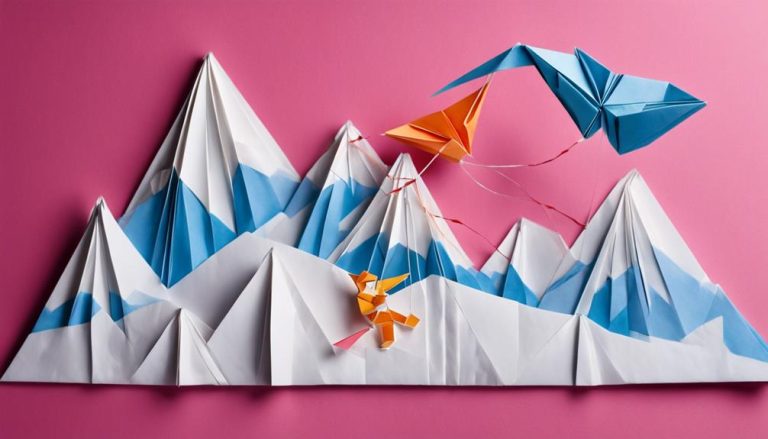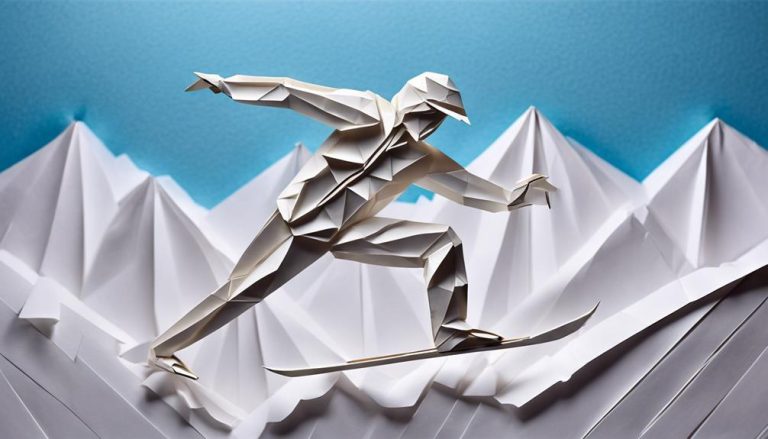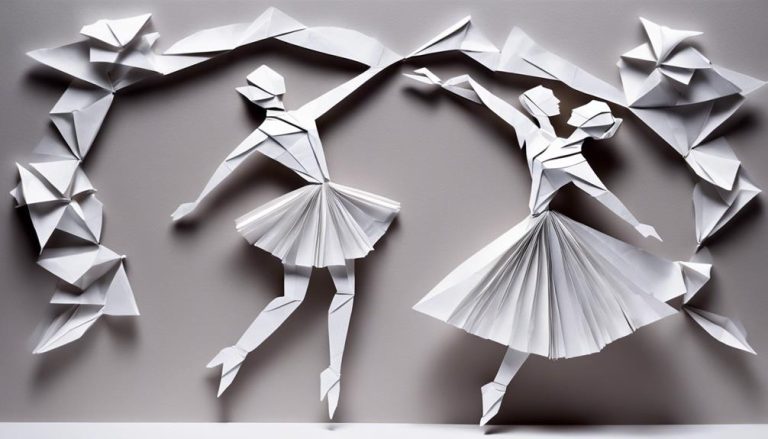General Rules of Ice Skating
Master the basics for safe, enjoyable ice skating. Balance and foot positioning are vital. Keep knees bent and center of gravity low. Use indoor rinks for smoother ice. Maintain blades and wear fitted skates with protective gear. Prevent injuries with proper alignment and strength training. Warm up before skating and wear the correct attire. Follow ice rink etiquette and warm-up with essential exercises. Maintain posture and practice balance for smooth turns. Learn stopping techniques and moves like jumping and spinning. More advanced tricks and tips await for a thorough ice skating experience.
Basics of Ice Skating
If you're new to ice skating, mastering the basics is essential for a safe and enjoyable experience on the ice. Balance techniques and proper foot positioning are key components to help you glide smoothly across the ice. Maintaining a low center of gravity and keeping your knees slightly bent can help improve your balance and stability while skating.
Ice skating surfaces vary from indoor rinks to outdoor ponds, each with its own maintenance requirements. Indoor rinks typically offer smoother ice surfaces that are regularly maintained to guarantee ideal conditions for skating. On the other hand, outdoor ponds may have rougher ice due to natural elements like snow and bumps. It's important to be aware of these differences and adjust your skating technique accordingly.
Safety Guidelines
When hitting the ice, you must prioritize safety above all. Equipment Safety Tips and Injury Prevention Techniques will be vital aspects to contemplate in order to enjoy a safe skating experience. Let's explore these key points together.
Equipment Safety Tips
To ensure your safety while ice skating, it is essential to follow proper equipment safety tips. Start by ensuring your blades are well-maintained. Check for any nicks or damage and have them repaired promptly to prevent accidents. Always wear properly fitted skates and make sure the laces are securely tied to provide ankle support. Additionally, wearing protective gear such as helmets, knee pads, and wrist guards can reduce the risk of injuries. When practicing your skating technique, focus on maintaining balance and using proper body alignment to prevent falls. By adhering to these blade maintenance and safety precautions, along with incorporating sound skating techniques and injury prevention methods, you can enjoy a safer and more fulfilling ice skating experience.
Injury Prevention Techniques
Ensuring proper body alignment and balance while ice skating is important to prevent injuries and enhance your overall safety on the ice. To further reduce the risk of injury, incorporate stretching exercises into your routine. Stretching helps improve flexibility and range of motion, decreasing the likelihood of strains and sprains. Additionally, consider incorporating strength training exercises into your off-ice regimen. Building strength in key muscle groups such as the core, legs, and ankles can provide better support and stability while skating, reducing the risk of falls and other injuries. Remember, injury prevention is vital in any physical activity, so take the time to prepare your body adequately before hitting the ice.
Proper Equipment
When hitting the ice, having the right gear is essential. Your skates, helmet, and protective pads are vital pieces of equipment. Ensuring everything fits properly will keep you safe and help you perform your best on the ice.
Essential Gear for Skating
Having the proper equipment is essential for a safe and enjoyable ice skating experience. Make sure to maintain your blades regularly to guarantee smooth gliding on the ice. Proper attire, such as warm clothing that allows freedom of movement, is critical for comfort and flexibility while skating. When it comes to skating technique, practice drills are key to improving your skills and confidence on the ice. Investing in well-fitted skates that provide ankle support and a good helmet for safety is crucial. Remember to wear gloves to keep your hands warm and protected. By having the right gear and taking care of it, you set yourself up for a more enjoyable and successful time on the ice.
Importance of Proper Fit
To guarantee a comfortable and safe ice skating experience, properly fitting gear is paramount. When it comes to enjoying your time on the ice, making sure your equipment fits correctly can make all the difference. Here are some key points to keep in mind:
- Blade sharpening: Regular maintenance of your blades ensures peak performance on the ice.
- Boot maintenance: Keep your boots in good condition to provide sufficient support and comfort.
- Proper lacing: Securely lace up your skates to avoid blisters and ensure stability.
- Sock thickness: Choose the right thickness of socks to prevent discomfort and blisters.
- Regular adjustments: Periodically check and adjust the fit of your skates as needed for peak performance and safety.
Ice Rink Etiquette
Observing proper ice rink etiquette is essential for a safe and enjoyable skating experience. When it comes to ice rink fashion, feel free to express yourself with colorful outfits and funky accessories, but make sure your clothing allows for easy movement on the ice. Skating buddies are great for company, but remember to be mindful of other skaters around you, especially beginners who may need extra space to practice. As for ice rink snacks, it's best to enjoy them off the ice to avoid creating hazards for others. When it comes to skating music, be considerate of different preferences and keep the volume at a moderate level so everyone can enjoy their time on the ice. Remember, good ice rink etiquette is all about respect for your fellow skaters and ensuring that everyone can have a fun and safe skating experience.
Warm-Up Exercises
Prepare your body for a safe and enjoyable ice skating session with these essential warm-up exercises. To get your muscles ready and prevent injuries, try incorporating the following into your routine:
- Stretching routine: Begin with gentle stretches for your legs, arms, and back. Focus on loosening up your hamstrings, quadriceps, and calves to enhance flexibility on the ice.
- Flexibility exercises: Perform exercises like leg swings, arm circles, and torso twists to improve your range of motion. Flexibility is important for executing smooth movements while skating.
- Cardio warm up: Get your heart rate up with a short cardio session. Jumping jacks, high knees, or a light jog around the rink can help increase blood flow and warm up your body.
- Strength training techniques: Incorporate bodyweight exercises like squats, lunges, and planks to strengthen your muscles. Building strength will not only enhance your performance but also reduce the risk of falls.
- Dynamic movements: Include dynamic movements like jumping and side shuffles to activate different muscle groups. Dynamic warm-ups prepare your body for the variety of movements involved in ice skating.
Skating Posture
Maintain proper alignment and balance to achieve ideal skating posture on the ice. Proper balance and body alignment are essential for successful ice skating. Your posture plays an important role in your overall performance and efficiency on the ice. To make sure you have the correct posture while skating, follow these guidelines:
| Aspect | Description | Importance |
|---|---|---|
| Head Position | Keep your head up and eyes forward. | Helps maintain balance. |
| Arm Placement | Arms relaxed and slightly bent at the elbows. | Aids in stability. |
| Knee Flexion | Bend your knees slightly and align them over your toes. | Enhances control. |
| Back Alignment | Keep your back straight and shoulders relaxed. | Improves overall posture. |
Turning Techniques
To perform smooth turns on the ice, concentrate on your body positioning and weight distribution. When it comes to turning techniques in ice skating, mastering edge control and balance drills is essential. Here are some tips to help you enhance your turns:
- Work on Edge Control: Practice shifting your weight to the inner or outer edges of your skates to initiate and maintain turns effectively.
- Engage in Balance Drills: Strengthen your core and leg muscles through various balance exercises to improve stability while turning.
- Master Pivot Turns: Learn how to pivot on one foot by rotating your body while keeping your skates in contact with the ice.
- Practice Crossovers: Perfect the crossover technique by crossing one foot over the other in a smooth and fluid motion to navigate turns efficiently.
- Focus on Smooth Movements: Avoid abrupt motions and aim for a seamless shift between turns to maintain speed and control on the ice.
Stopping Techniques
Now, let's talk about stopping techniques on the ice. You have the basic stopping methods and more advanced stopping techniques to explore. Learning how to stop properly is essential for your safety and control while skating.
Basic Stopping Methods
When learning basic stopping methods in ice skating, it is essential to grasp and practice proper techniques to guarantee your safety and control on the ice. Here are some key points to keep in mind:
- Maintain Balance Control: Distribute your weight evenly on both skates.
- Use Beginner Tips: Start practicing in a controlled environment with assistance if needed.
- Learn Quick Stops: Begin with basic snowplow stops to gradually progress into more advanced techniques.
- Practice, Practice, Practice: Repetition is key to mastering stopping methods.
- Stay Relaxed: Tension can hinder your ability to stop effectively.
Advanced Stopping Techniques
Advanced stopping techniques in ice skating require precise coordination and skill to execute effectively on the ice. To master these techniques, you can focus on advanced balance drills to improve stability and control. Incorporating advanced speed control techniques will also help you regulate your momentum while performing complex stops. Essential edge work plays a pivotal role in executing sharp and quick stops by utilizing the edges of your skates efficiently. Additionally, learning advanced power slides enables you to stop abruptly and with finesse, showcasing your mastery of the ice. By practicing these techniques diligently, you can elevate your stopping abilities and maneuver with confidence on the ice, enhancing your overall ice skating experience.
Skating Backwards
To skate backwards effectively, shift your weight slightly onto the balls of your feet while keeping your knees bent. This position helps you maintain balance and control as you move backward on the ice. Here are some key points to keep in mind when practicing skating backwards:
- Backwards Crossovers: Mastering backwards crossovers is vital for fluid and efficient movement. Practice crossing one foot over the other while maintaining a smooth rhythm.
- Use Your Arms: Your arms play an important role in balance and coordination while skating backwards. Keep them slightly bent and use them to help steer and stabilize your movements.
- Maintain a Straight Back: Avoid leaning too far forward or backward. Keep your back straight to guarantee stability and proper alignment.
- Practice Transitions: Work on switching seamlessly between forward and backward skating to enhance your overall skills on the ice.
- Backwards Skating Drills: Incorporate specific drills into your practice routine to improve your agility, speed, and confidence when skating backward.
Jumping and Spinning
To improve your skills in jumping and spinning on the ice, focus on maintaining proper body positioning and executing precise movements with control. When it comes to mastering advanced techniques in jumps and spins, technique refinement and artistic expression play pivotal roles in enhancing your performance quality. Here are some key points to keep in mind:
| Jumping and Spinning Tips | Description | Benefits |
|---|---|---|
| Body Positioning | Keep your core engaged and | Enhances stability and |
| arms and legs properly | control during jumps and | |
| positioned for balance. | spins. | |
| Precise Movements | Execute movements with | Improves the quality of |
| precision and control, | your jumps and spins, | |
| paying attention to details. | leading to better overall | |
| performance. | ||
| Artistic Expression | Add your personal flair to | Enhances the visual |
| jumps and spins, focusing | appeal of your performance, | |
| on grace and style. | making it more engaging. |
Advanced Tips and Tricks
With proper technique and practice, mastering intricate maneuvers can elevate your ice skating performance to a new level. When it comes to advanced tips and tricks in ice skating, there are several key elements to focus on:
- Advanced spins: Enhance your routine with complex spinning techniques that showcase your control and precision on the ice.
- Jumps: Work on perfecting difficult jumps like axels, loops, and salchows to add flair and excitement to your performance.
- Complex footwork: Incorporate intricate footwork sequences that challenge your agility and creativity, setting your routine apart from the rest.
- Combinations: Link jumps, spins, and footwork seamlessly to create dynamic combinations that demonstrate your mastery of the sport.
- Precision and timing: Pay close attention to the details, ensuring each move is executed with precision and impeccable timing to captivate your audience and judges.
Frequently Asked Questions
Can I Wear My Regular Sneakers on the Ice Instead of Ice Skates?
You may be tempted to wear sneakers on the ice, but it's not safe. Sneakers lack the necessary grip and ankle support that ice skates provide. Avoid potential slips and injuries by opting for proper ice skates.
How Often Should I Sharpen My Ice Skates?
When it comes to keeping your ice skates sharp for best performance, remember that 'a stitch in time saves nine.' Regularly sharpen your blades based on usage. Proper maintenance guarantees your equipment stays in top shape.
Are There Any Specific Stretches I Should Do Before and After Skating to Prevent Injuries?
Prior to skating, make certain a proper warm-up with dynamic stretches. After skating, concentrate on post-skating stretches to assist in recovery and prevent injuries. Integrating these routines into your skating regimen can help keep you safe and flexible.
Is It Better to Skate on an Indoor or Outdoor Rink?
When deciding between indoor and outdoor rinks, weigh the pros and cons. Indoor rinks offer controlled conditions, ideal for beginners. Outdoor rinks provide a natural setting but can be affected by weather. Choose based on your preferences.
What Should I Do if I Fall on the Ice and Can't Get Back Up?
If you find yourself on the ice, unable to stand, don't panic. Remember, safety first! Try to get help if needed and follow injury prevention guidelines. It's better to slide gracefully than push yourself up relentlessly.






